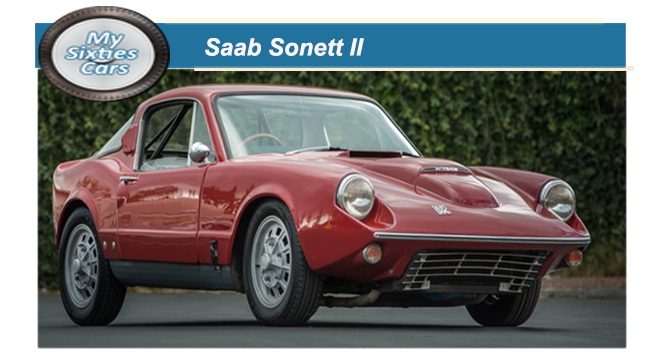
By the mid-Fifties, Saab was well established with a growing reputation for producing sturdy and reliable saloon cars and estate that ideally suited the Scandinavian climates and road conditions.
Someone in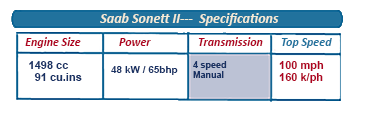 the organisation must have gained the impression that Saab was too conservative in their strategic planning, and to stimulate the Swedish driver’s imagination, the company should develop a two-seater sports coupe.
the organisation must have gained the impression that Saab was too conservative in their strategic planning, and to stimulate the Swedish driver’s imagination, the company should develop a two-seater sports coupe.
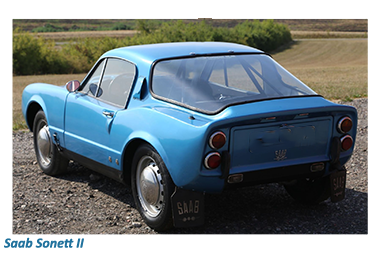 Saab handed the task of developing the new project, to be known as the Sonett, to the long-term head of testing Rolf Mellde.
Saab handed the task of developing the new project, to be known as the Sonett, to the long-term head of testing Rolf Mellde.
Mellde was one of those most in favour of the Sonnet, and even though he was given a tiny budget to get in running, he set to it with great gusto.
In his remotely situated design studio, nothing more than a converted barn, Mellde came up with the fibreglass prototype Sonett (or Saab 94) which was powered by a tiny, two-stroke, three-cylinder engine.
![]()
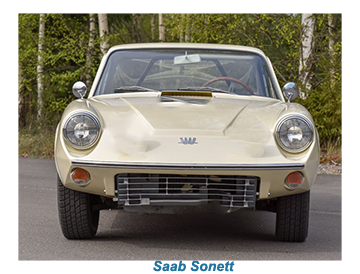
The future was looking bright for the Sonett until the car’s design began to run into problems with race regulations, meaning that just six were produced.
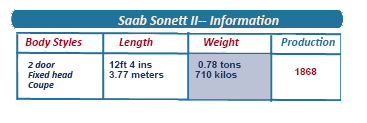 It was back to the drawing board for Rolf, where he was to return on a very regular basis for the next ten years before a decent street car could be launched.
It was back to the drawing board for Rolf, where he was to return on a very regular basis for the next ten years before a decent street car could be launched.
At least Saab had the good grace to name the Sonett II, in honour of the no less than 24 prototypes produced in the previous decade.
Officially launched in 1966, the Sonett II’s engine had been upgraded to a 91-cubic-inch (1,500-cc) Ford V4.
Such a massive engine on such a small and lightweight car made a very potent combination, with the vehicle capable of reaching a top speed of 100 mph(160K/ph.) with a corresponding bulge in the hood to prove it.
With such power at its disposal, the Saab Sonett II now came with a long list of advanced safety features, such as a roll bar, high-backed bucket seats, and three-point seat belts.
The entire front section of bodywork hinged forward to allow access to the engine, suspension, and gearbox.
![]()
The Saab Sonett II coupe body was constructed entirely of fiberglass with sharply truncated, "sawed-off" back end and a large wraparound back window.
Four round tail lamps stood in a vertical back panel. Air extractors went behind the door windows, on B-pillars. A low, pointed nose held a grille made up of horizontal slats, down near the ground (below the thin rubber bumper strip at the leading edge).
That grill
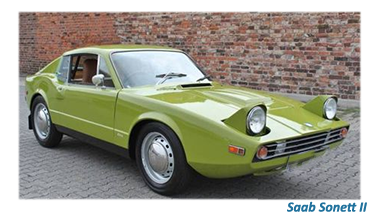 e was flanked by small round parking/signal lights, with narrow black rubber bumperettes at the front.
e was flanked by small round parking/signal lights, with narrow black rubber bumperettes at the front.
Both the hood and front fenders hinged forward, and the couple had no trunk lid.
In the Seventies, a more conventional and Italian-inspired Sonett III took over, with the engine enlarged to 1700 cc 103 cubic inches.
It was too little too late and the die was cast for Saab’s adventurous entry into the sports car world .
With sales down to next to nothing, the Saab Sonett was discontinued in 1974.






